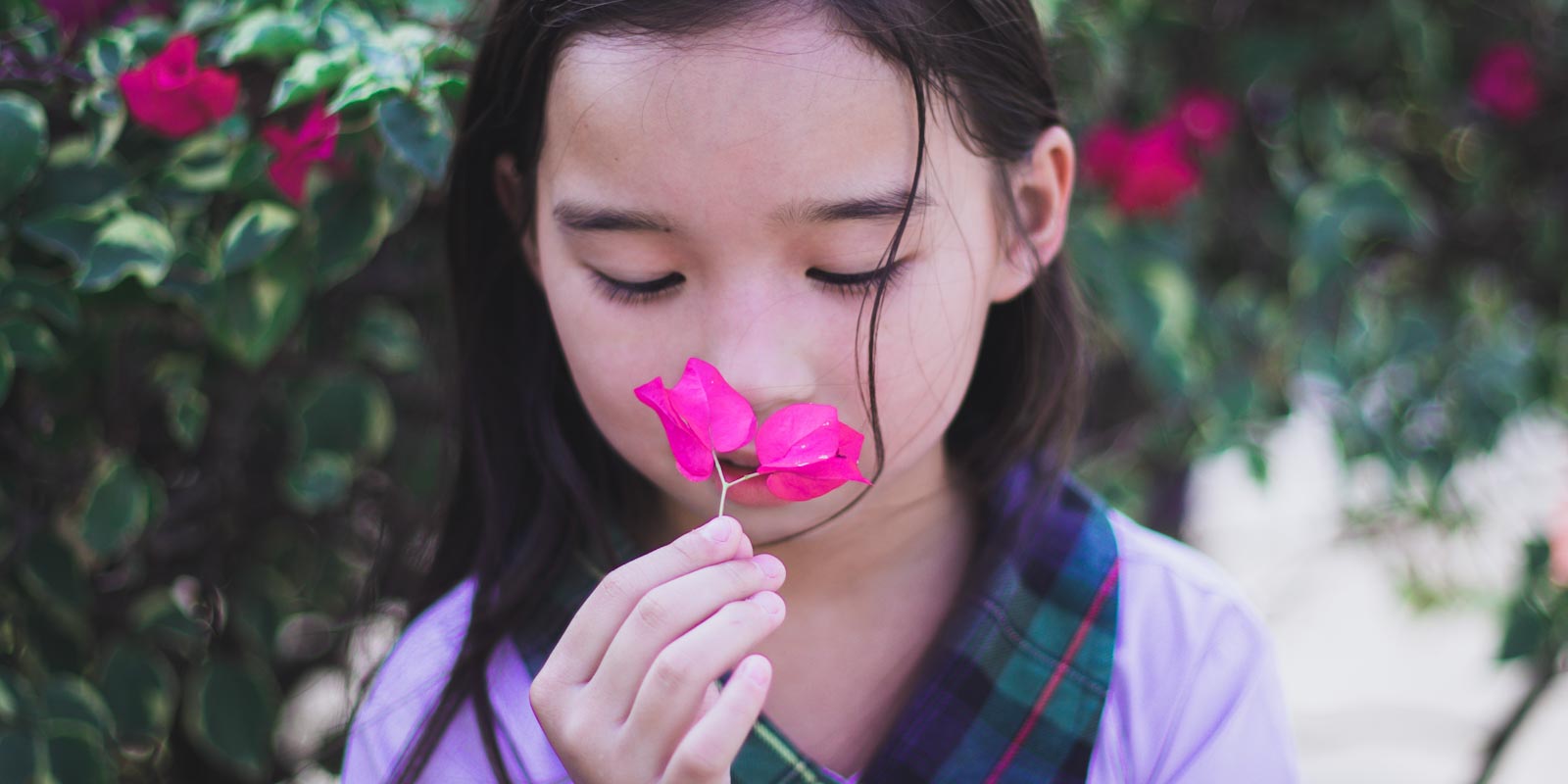
Smell is an undervalued sense. Early childhood educators frequently provide sensory experiences for sight and sound, but smell is sometimes forgotten about. Fortunately, our world is rich with delicious scents for children to explore.
Smell connects children to their world, which aligns with The Early Years Learning Framework (EYLF). Different scents make children curious (4.1), and the sense of smell helps children investigate (4.2) different materials (4.4).
Learning experiences
Smell nature
Many of the best scents come from nature: a warm crackling fire, flowers, potpourri, freshly cut grass, crumpled gum leaves, raindrops, animal fur, and earth from your garden.
Nature play automatically stimulates children's sense of smell, but early childhood educators can enhance the experience:
- Direct children's attention to strong-smelling objects: "Have you seen this new bush? The leaves smell lovely!"
- Make small sensory bags filled with cinnamon sticks or potpourri and sew them shut so children cannot access their contents. Demonstrate how to enjoy the scents by holding the bags to your nose.
- Add natural items to warm-water play, to draw out the scents.
- Incorporate plants into your indoor and outdoor learning environments that are well-known for their appealing scents.
Smell food
Yummy foods often come with yummy scents: home-baked bread and cakes, fruits and vegetables, vanilla extract, peppermint essence, tea and coffee, herbs and spices.
Like items from nature, some foods can be added to play. Sprinkle herbs like rosemary or mint into warm-water play, or add them to your playdough.
Value the act of cooking with friends and make it a highlight of your program. Talk to children about the smells, not just the tastes, of ingredients. Demonstrate how to smell whole fruits and vegetables before preparing them.
Discuss bad smells
While it is unlikely that early childhood educators will want to expose children to unpleasant smells, they are a natural part of life and offer teachable moments. Whether there is a smelly bin in your classroom or pollution outside, talk to children about why things smell bad. Help children understand that bad smells can mean something isn't healthy for us, like rotten milk.
